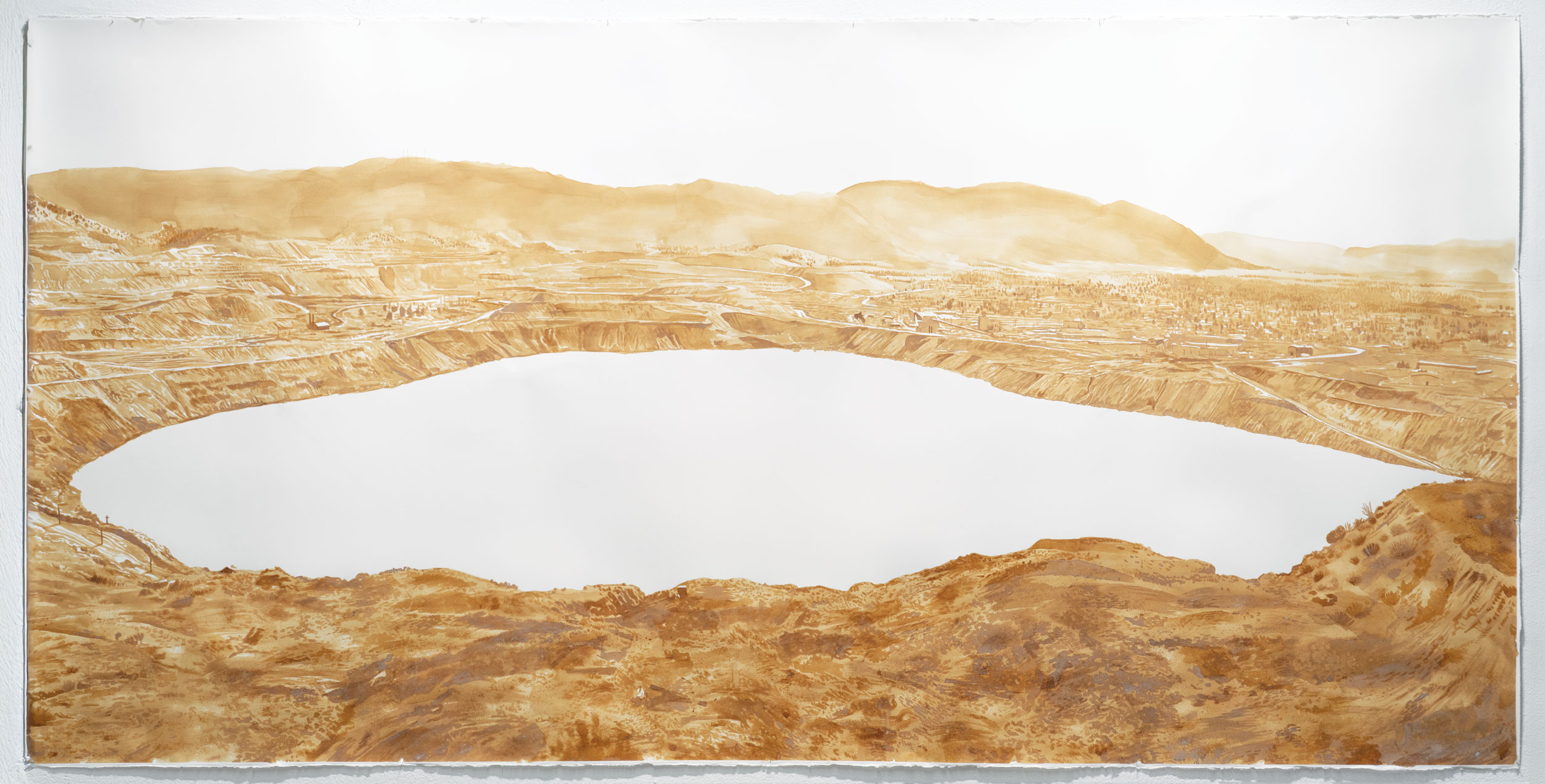
The Berkeley Pit in Butte, Montana is a flooded, defunct copper mine. Its acidic waters are laced with heavy metals and rare earth elements and have claimed the lives of thousands of waterfowl.

This painting includes a lyrics page from New Songs for Butte Mining Camp, a book of protest songs for mining unions. Sulfuric acid (the ochre colors in the paintings) is the byproduct of extracting copper nanoparticles from copper sulfate. This acid was also commonly used in heap leaching. Copper oxide (the blue color seen in the paintings) was created by marinating copper plates in a bath of vinegar—about the same pH value as the water in the Berkeley Pit. These paintings are constantly changing as the acid and oxide both crystalize and slowly dissolve the cotton paper.

This memorializes the thousands of snow geese that died after landing in The Berkeley Pit—a defunct open-pit copper mine—during a brutal 2016 winter. The toxic waters cauterized their insides. Sulfuric acid (the ochre colors in the paintings) is the byproduct of extracting copper nanoparticles from copper sulfate. This acid was also commonly used in heap leaching. Copper oxide (the blue color seen in the paintings) was created by marinating copper plates in a bath of vinegar—about the same pH value as the water in the Berkeley Pit. These paintings are constantly changing as the acid and oxide both crystalize and slowly dissolve the cotton paper.

This memorializes the thousands of snow geese that died after landing in The Berkeley Pit—a defunct open-pit copper mine—during a brutal 2016 winter. The toxic waters cauterized their insides. Sulfuric acid (the ochre colors in the paintings) is the byproduct of extracting copper nanoparticles from copper sulfate. This acid was also commonly used in heap leaching. Copper oxide (the blue color seen in the paintings) was created by marinating copper plates in a bath of vinegar—about the same pH value as the water in the Berkeley Pit. These paintings are constantly changing as the acid and oxide both crystalize and slowly dissolve the cotton paper.